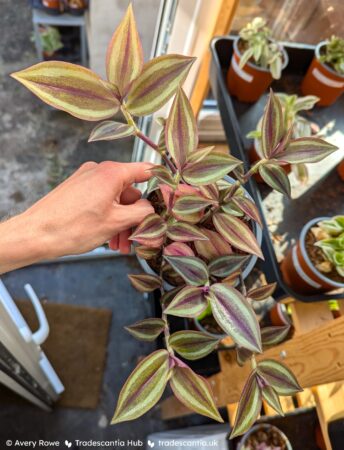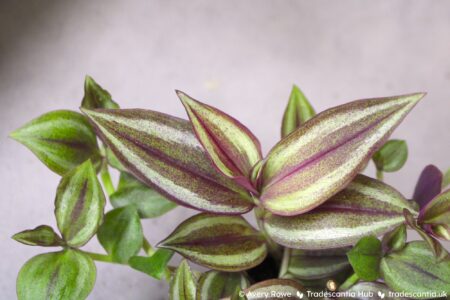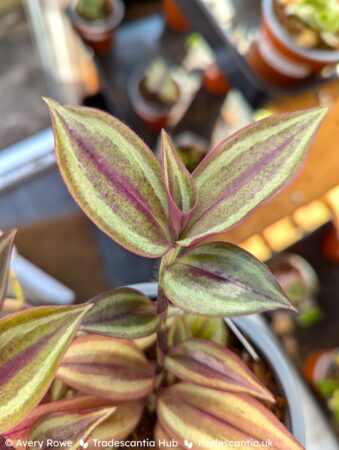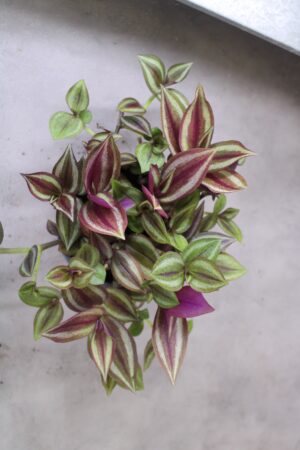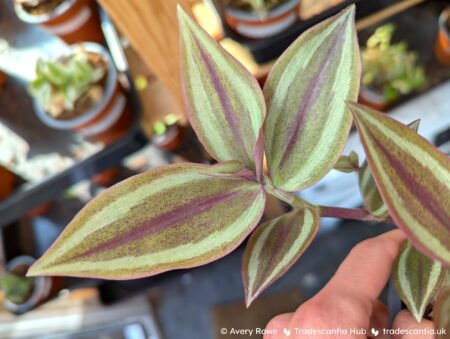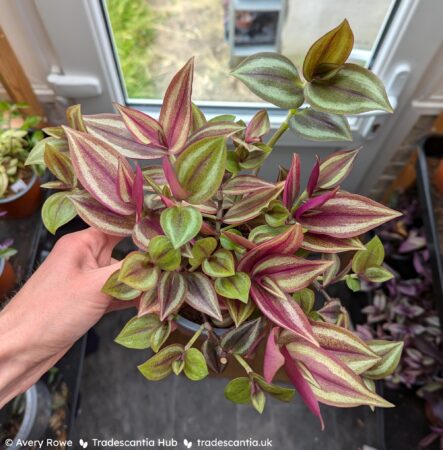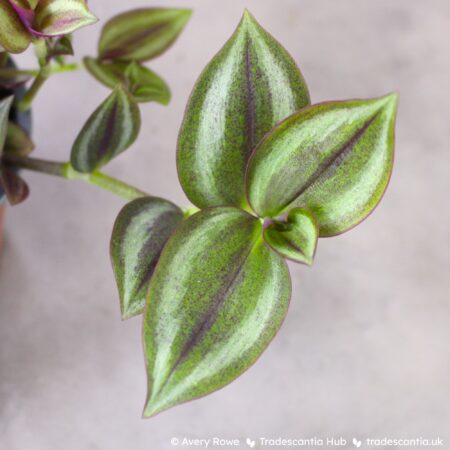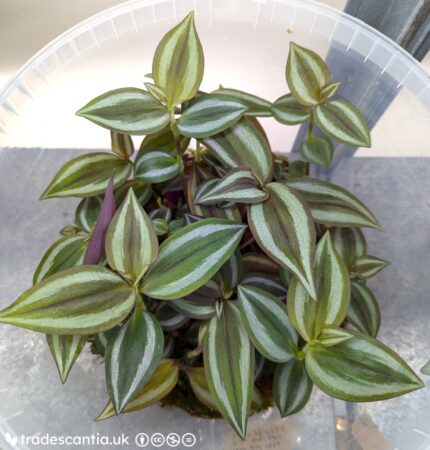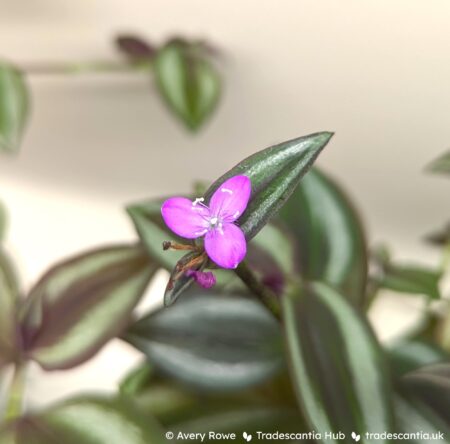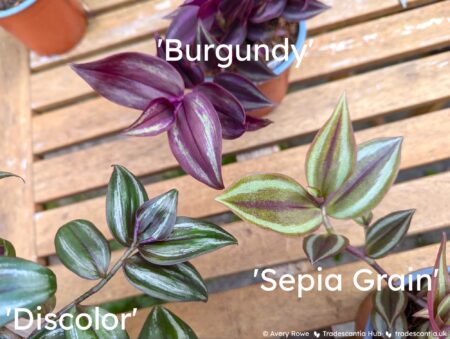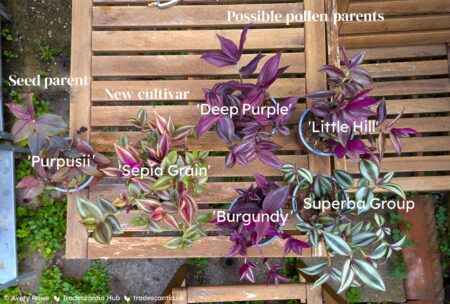Details
| Full name | Tradescantia zebrina ‘Sepia Grain’. |
| Name status | Accepted, the valid name for a unique cultivar. Registered in 2024, the name will be established once published in hardcopy (Brickell et al., 2016, Art. 27.1). |
| Origins | Open-pollinated seedling bred in 2023. The seed parent is Tradescantia zebrina ‘Purpusii’. The pollen parent is unknown – either ‘Burgundy’, ‘Deep Purple’, ‘Little Hill’, or Superba Group. Named because of the appearance of the brown speckled leaves. Bred, named, registered, and introduced by Avery Rowe in Machynlleth, Wales, UK. |
| Classification | The species Tradescantia zebrina is sometimes labelled with its botanical synonyms Tradescantia pendula, Tradescantia argentea, Zebrina pendulaand Cyanotis zebrina. |
| Legal protection | None. |
| Availability | Newly introduced in the UK. |
Description
Described with reference to the RHS Colour Chart (6th Edition; 2019 reprint).
| Species | Tradescantia zebrina. |
| Growth habit | Stems initially grow upright but soon start to sprawl and trail out of any container. |
| Foliage | Stems are 2.5-5mm wide with internodes 1.5-4cm long. The colour ranges from strong yellow green (144A) to greyish reddish brown (200B). All the stems are dotted with lighter green freckles and completely hairless. Leaves are slightly asymmetrical pointed ovals, 5-8cm long and 2.5-3.5cm wide, smooth except for a few hairs at the top of the sheath and sometimes a line of tiny hairs along the margin. Each half of the leaf has a stripe running its length, taking up 20-30% of its total width. The base colour of the upper leaf surfaces is moderate olive green (146A to 137B). The stripes are greenish grey (N189C) with a metallic sheen. The leaves are speckled with greyish purple (N77A), concentrated in a stripe down the centre of the leaf and becoming bolder in brighter light. Leaf undersides are dark purplish red (N79B) to dark purplish grey (N187A). Sheaths are moderate yellow green (147D), with purple veins in bright light. |
| Flowers | Flowers are 10-15mm across. The petals are reddish purple. The stamen filaments and style are purple, anthers and stigma are white. |
| Comparisons | The most similar cultivars are ‘Discolor’ and ‘Burgundy’. Compared to ‘Discolor’, the base colour of the leaves is lighter. The pigment is distributed in a speckled pattern with a centre stripe, instead of streaks or blotches over the whole leaf. Compared to ‘Burgundy’, the base colour of the leaves is lighter and less purple. The stamen filaments and style are purple rather than white. |
References
Brickell, C. D., Alexander, C., Cubey, J. J., David, J. C., Hoffman, M. H. A., Leslie, A. C., Malécot, V., Jin, X. (2016). International Code of Nomenclature for Cultivated Plants. PDF link.

